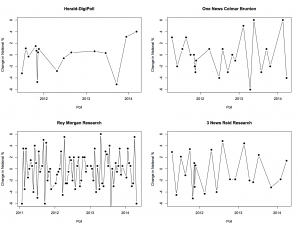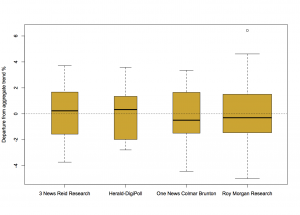Auckland rates arithmetic
In today’s Herald story about increases in rates and impact on renters it’s not that the numbers are wrong, it’s that they haven’t been subjected to the right sorts of basic arithmetic.
The lead is
Auckland landlords are hiking rents amid fears of big rates increases next year on the back of spiralling property values.
and later on
Increases in landlords’ expenses, including rates, mortgage interest rates and insurance premiums, could push up rent on a three-bedroom Auckland house by between $20 and $40 a week, he said.
‘Including‘ is doing a lot of work in that sentence. The implications are particularly unfortunate in a story targeted at renters, who don’t get sent rates information directly and are less likely to know the details of the system.
The first place to start is with a rough estimate of how much money we’re looking at. One of the few useful things the Taxpayers’ Union has done is to collate data on rates, hosted now at Stuff. The average Auckland rates bill was $2636. That’s all residences, not three-bedroom houses, but the order of magnitude should be right. An annual bill of $2636 is $50/week. If the average total weekly rates payment is around $50, the average increase can’t reasonably be a big fraction of $20-$40/week or there’d be a lot more rioting in the streets.
Anyone who owns a house in Auckland or checks the Council website should know there is a cap on rates increases to cover the neighbourhoods where prices are increasing fastest. The cap is 10%/year; no rates increase faster than that, and most increase slower. To get more detailed information you’d need to look at the website describing 2014/2015 rates changes, and find that the average increase for residential properties is 3.7%, then calculate that 3.7% of $50/week is about $2/week.
According to the Reserve Bank, both floating and two-year-fixed mortgage interest rates have gone up 0.5% since last year. That’s $9.60/week per $100,000 of mortgage, so it’s likely to be a much bigger component of the rental cost increase than the rates are.
The average increase in rates is a lot slower than the increase in property prices (10% in the year to July), but you’d expect it to be. The council doesn’t set a fixed percentage of value from year to year and live with real-estate price fluctuations. It sets a budget for total rates income, and then distributes the cost using a combination of a fixed charge and a proportion of value. In other words, the increase in average real-estate prices in Auckland has no direct impact on average increase in rates — it’s just that if your house value has gone up more than average, your rates will tend to go up more than average. Increases in average real-estate price obviously do lead to increases in rental price, but rates are not the mechanism.
The Council is currently working on a ten-year plan, including the total rates income over that period of time. It will be open for public comment in January.


